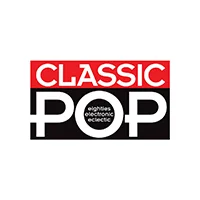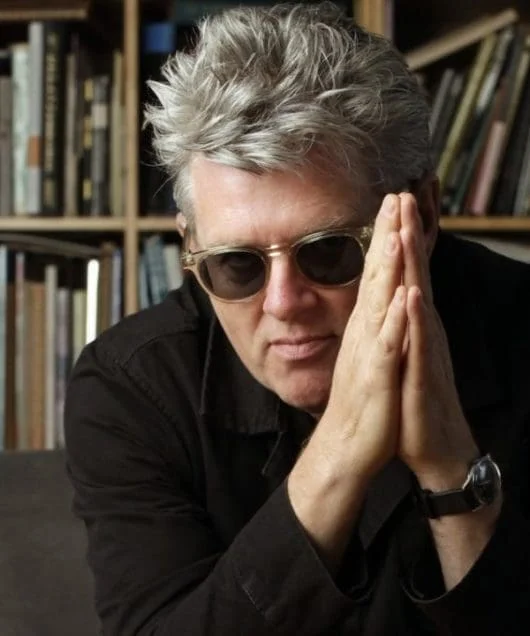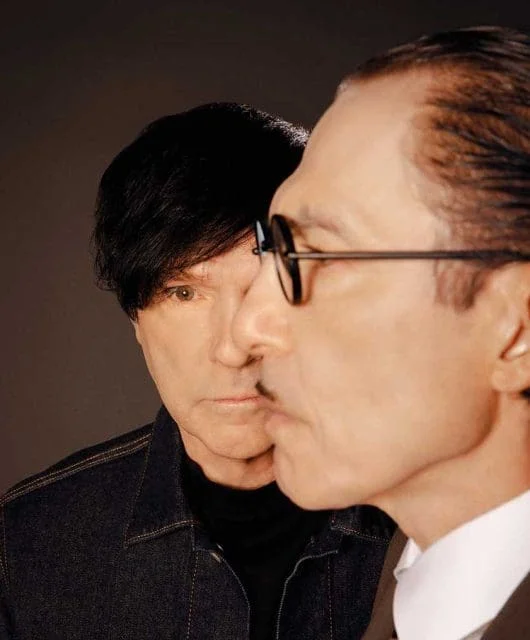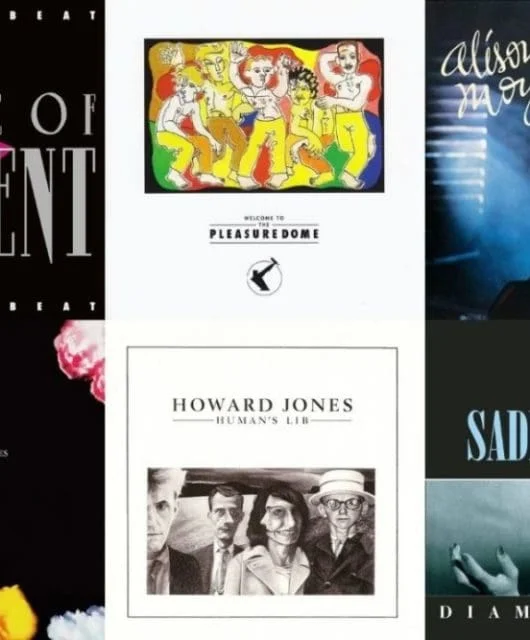The complete guide to The Bee Gees
By Classic Pop | July 29, 2022
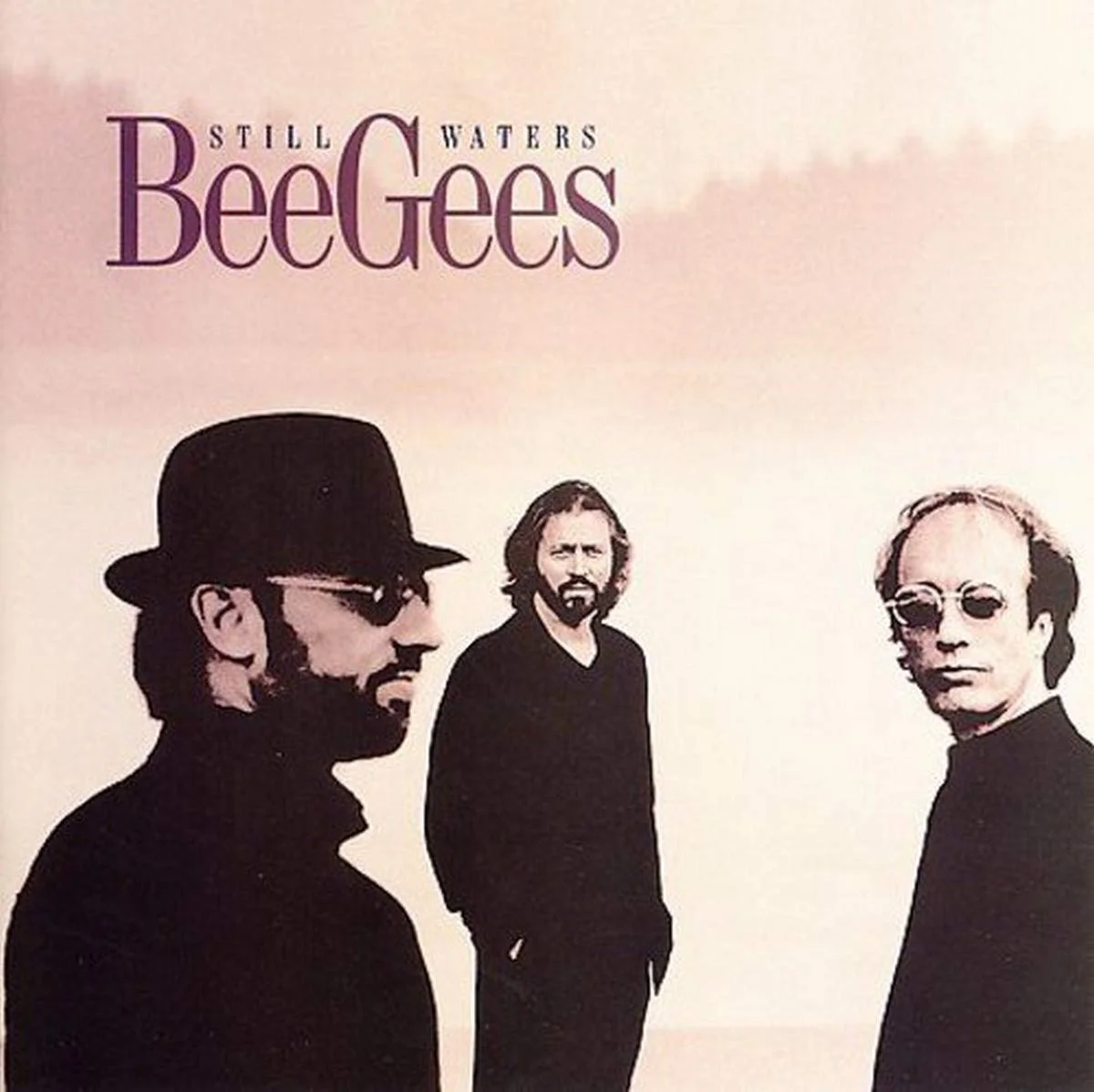
Inarguably the Isle of Man’s most successful pop act of all time – shifting more than 220 million records worldwide – the Bee Gees first found fame in the 60s, before going global at the height of the disco boom the following decade… By David Burke
The brothers Gibb – Barry, Robin and Maurice – cut their musical teeth as The Rattlesnakes on the Manchester skiffle scene of the mid 50s, having relocated to the north of England metropolis from their native Isle of Man. But it was another move – this time to Australia – that birthed the Bee Gees, and the beginning of a glorious career spanning seven decades.
Early triumphs down under included Wine And Women and Spicks And Specks, They returned to Blighty in 1967, at the behest of impresario Robert Stigwood, who, describing them as the year’s “most significant new talent”, signed them to Polydor Records.
Stigwood’s faith in the siblings was validated almost immediately, as New York Mining Disaster 1941 and To Love Somebody both made the lower reaches of the UK chart. Then came Massachusetts, their first No.1, repeated with I’ve Gotta Get A Message To You in 1968.
The group were also establishing themselves in the United States; I Started A Joke climbed to No.6 on the Billboard chart. The first half of the 70s was a relatively fallow period at home, although they did secure pole position in the US with How Can You Mend A Broken Heart.
The advent of disco was reflected on their albums Main Course and Children Of The World, both of which featured further American chart-toppers in Jive Talkin’ and You Should Be Dancing. But even this was merely a preamble to the tour-de-force that was Saturday Night Fever.
This was the biggest-selling soundtrack of all time, and with good reason, too, given the matchless majesty of Stayin’ Alive, More Than A Woman and How Deep Is Your Love. It was the apogee of a movement that would soon be reduced to ashes, literally, as disco records were publicly burned in the US. In the 80s, You Win Again gave the Bee Gees their fifth and final UK No.1 (after Night Fever and Tragedy).
Barry Gibb remains the sole surviving member, following the deaths of Maurice in 2003, and Robin nine years later.
The must-have albums
Main Course, 1975
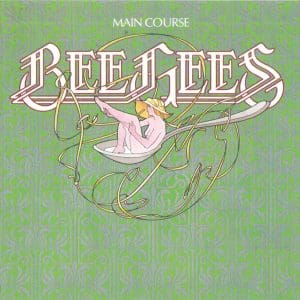 It was Eric Clapton who encouraged the Bee Gees to work on Main Course at Criteria Studios in Miami. Barry Gibb recalled: “Eric said, ‘I’ve just made an album called 461 Ocean Boulevard in Miami. Why don’t you guys go to America and do the same, and maybe the change of environment will do something for you?’ I think it was really good advice.”
It was Eric Clapton who encouraged the Bee Gees to work on Main Course at Criteria Studios in Miami. Barry Gibb recalled: “Eric said, ‘I’ve just made an album called 461 Ocean Boulevard in Miami. Why don’t you guys go to America and do the same, and maybe the change of environment will do something for you?’ I think it was really good advice.”
With Arif Mardin producing, the Bee Gees infused their sound with influences absorbed from Miami’s contemporary dance-music scene and clocked up three US hits, among them a second No.1, Jive Talkin’.
“We decided that it was our big chance to get serious about our music again,” said Maurice. Reputedly, Main Course was the album that marked the debut of Barry’s trademark falsetto.
Children Of The World, 1976
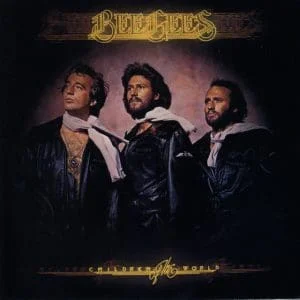 No Arif Mardin this time out, so the Bee Gees – after a false start under Richard Perry – decided to helm their own production with the assistance of engineer Karl Richardson and musical adviser Albhy Galuten, a triumvirate that would oversee the group’s halcyon period in the latter half of the decade.
No Arif Mardin this time out, so the Bee Gees – after a false start under Richard Perry – decided to helm their own production with the assistance of engineer Karl Richardson and musical adviser Albhy Galuten, a triumvirate that would oversee the group’s halcyon period in the latter half of the decade.
It certainly proved an astute move on Children Of The World, as the first single, You Should Be Dancing, topped the Billboard chart and was hailed by Rolling Stone magazine as “an impossibly propulsive track” that “rocks KC & The Sunshine Band’s Shake Your Booty right off the turntable (or dancefloor)”.
They also ramped up the disco vibe with the likes of You Stepped Into My Life, Boogie Child and Subway.
Saturday Night Fever, 1977
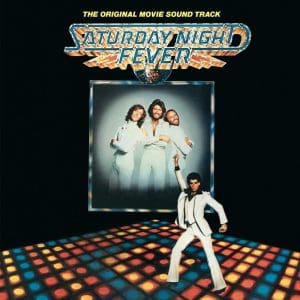 According to the late Robin Gibb, the Bee Gees were initially dismissive when Robert Stigwood commissioned them to write the Saturday Night Fever soundtrack. “We were recording our new album in the north of France,” he recalled, “and we’d written and recorded about four or five songs when Stigwood rang from LA and said: ‘We’re putting together this little film, low budget, called Tribal Rites Of The New Saturday Nights – would you have any songs on hand?’
According to the late Robin Gibb, the Bee Gees were initially dismissive when Robert Stigwood commissioned them to write the Saturday Night Fever soundtrack. “We were recording our new album in the north of France,” he recalled, “and we’d written and recorded about four or five songs when Stigwood rang from LA and said: ‘We’re putting together this little film, low budget, called Tribal Rites Of The New Saturday Nights – would you have any songs on hand?’
We said: ‘Look, we can’t, we haven’t any time to sit down and write for a film,’” Well, they found the time, and the album went on to sell more than 45 million units, staying on the Billboard chart for some three years and spending 18 weeks at No.1 in the UK.
Spirits Having Flown, 1979
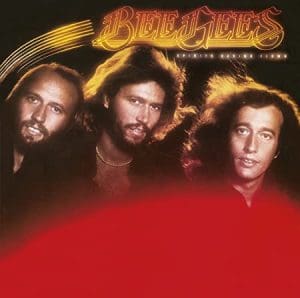 How do you follow an album like the Platinum-heavy Saturday Night Fever? With an album that puts you on a par with The Beatles, of course.
How do you follow an album like the Platinum-heavy Saturday Night Fever? With an album that puts you on a par with The Beatles, of course.
Spirits Having Flown spawned three American No.1 singles – Too Much Heaven, Tragedy and Love You Inside Out – thus replicating the performance of Saturday Night Fever’s How Deep is Your Love, Stayin’ Alive and Night Fever, making it six consecutive chart-toppers, an unbroken run which equalled a record set by the Fab Four.
This despite problems in the Gibb camp. Maurice was battling alcoholism and back pain, which reduced his contributions. Robin, too, found himself marginalised as a vocalist, with Living Together his only lead, the first time that was the case since 1970’s Cucumber Castle.
- Read more: 80s movie soundtracks
And the rest…
E.S.P., 1987
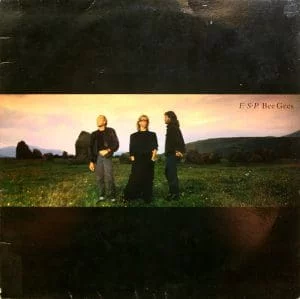 E.S.P. was the first Bee Gees album after a six-year sabbatical, during which each of the Gibb brothers had embarked on solo projects and writing for other artists.
E.S.P. was the first Bee Gees album after a six-year sabbatical, during which each of the Gibb brothers had embarked on solo projects and writing for other artists.
Barry had even worked on several songs for Staying Alive, the sequel movie to Saturday Night Fever. On a new label, Warner Bros, they were reunited with Arif Mardin, though largely without their usual Midas touch.
The one exception was You Win Again, which claimed top spot in the UK, Ireland, Switzerland, Germany, Austria and Norway. While the brothers shared compositional duties, vocally it’s Barry who dominates, anchoring eight tracks, including Live Or Die (Hold Me Like A Child).
One, 1989
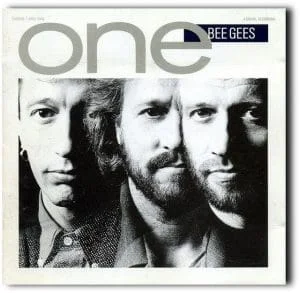 The Bee Gees were in the early stages of recording One in 1988, when the youngest Gibb brother, Andy, suddenly died as a result of myocarditis, an inflammation of the heart muscle. The sessions were subsequently shelved until November.
The Bee Gees were in the early stages of recording One in 1988, when the youngest Gibb brother, Andy, suddenly died as a result of myocarditis, an inflammation of the heart muscle. The sessions were subsequently shelved until November.
What the grieving siblings eventually delivered was a melancholic collection, not least on Wish You Were Here, dedicated to Andy. There are moments of peerless pop, too, of course, such as Bodyguard and Tokyo Nights, while One “brought us back to US radio”, declared Barry, adding, “a leading paper recently stated: ‘The Bee Gees are capable of at least one more hit’. I don’t believe that – I believe we could have at least two!”
Size Isn’t Everything, 1993
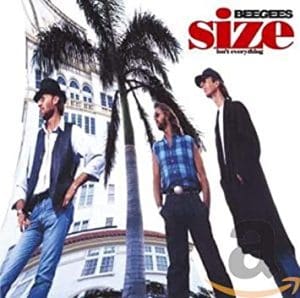 After three albums on Warner Bros, the Bee Gees were back at Polydor. And despite personal difficulties – Maurice was a recovering alcoholic, Barry’s wife and prematurely born new daughter were suffering ill health, while their dad had also died – the brothers managed to create their best work of the decade.
After three albums on Warner Bros, the Bee Gees were back at Polydor. And despite personal difficulties – Maurice was a recovering alcoholic, Barry’s wife and prematurely born new daughter were suffering ill health, while their dad had also died – the brothers managed to create their best work of the decade.
There’s a dance music reboot on Paying The Price Of Love, while the influence of ethereal Irish chanteuse Enya runs through Heart Like Mine. Barry reckoned Blue Island, dedicated to the children of the former Yugoslavia, was the “nicest track” they’d ever written.
But the standout is For Whom The Bell Tolls, which gave the Bee Gees a Top Five hit in four successive decades.
Still Waters, 1997
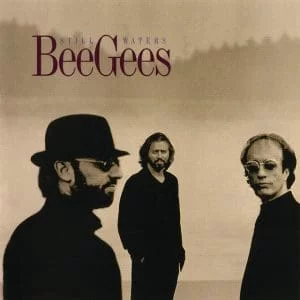 A roll call of heavyweight producers was drafted in for Still Waters, the likes of Russ Titelman (Eric Clapton, Steve Winwood, George Harrison), David Foster (Celine Dion, Barbra Streisand, Natalie Cole), Hugh Padgham (Phil Collins, Sting) and the inimitable Arif Mardin.
A roll call of heavyweight producers was drafted in for Still Waters, the likes of Russ Titelman (Eric Clapton, Steve Winwood, George Harrison), David Foster (Celine Dion, Barbra Streisand, Natalie Cole), Hugh Padgham (Phil Collins, Sting) and the inimitable Arif Mardin.
This multiplicity of cooks did crowd the kitchen somewhat, serving up mostly bland fare. The exceptions are Alone, No.5 in the UK; the Christmassy Miracles Happen and the poignant ballad, I Will, overseen by Mardin.
This is the Bee Gees on autopilot augmented by bells and whistles but as Rolling Stone pointed out, “Those close-knit brotherly harmonies still quaver and quake after all of these years.”
- Read more: The story of MTV
The essential singles
How Deep Is Your Love, 1977
Voted the UK’s favourite Bee Gees song by viewers of ITV, How Deep Is Your Love was supposedly earmarked for Yvonne Elliman, but she plumped for If I Can’t Have You instead. Although he doesn’t get a credit, keyboard player Blue Weaver had “a tremendous amount of input”, claimed co-producer Albhy Galuten. Weaver suggested the strings and created the electric-piano part that forms the basis of the track. Barry admitted that “a lot of the textures were added on” and the final mix was “a little different than the way we wrote it”.
Stayin’ Alive, 1977
Seldom has the compound of sound and vision been more dynamic than in the opening sequence of the movie Saturday Night Fever, as John Travolta confidently struts his stuff through a run-down neighbourhood while Stayin’ Alive plays over the credits. It’s a defining moment in cinema and possibly the defining moment of the disco era. But don’t be fooled by the pulsating rhythm – this is a song with a dark undercurrent “about survival in the streets of New York”, Robin Gibb asserted. “People crying out for help – desperate songs. Those are the ones that become giants.”
Night Fever, 1977
The sixth single from the Saturday Night Fever soundtrack became the Bee Gees’ first simultaneous No.1 on both sides of the Atlantic. Robert Stigwood approached the Gibbs to pen a song for a film he was producing at the time with the working title Saturday Night but since the Bee Gees already had Night Fever, they convinced Stigwood to commit to that – and even change the name of the movie to Saturday Night Fever along the way. The song’s string intro was inspired by Percy Faith’s Theme From A Summer Place, which had been released way back in 1959.
Too Much Heaven, 1978
Too Much Heaven was the Bee Gees’ offering to the Music For UNICEF Concert: A Gift Of Song show at the United Nations General Assembly, New York in 1979, before finding its way onto the Spirits Having Flown album and the top of the US singles chart. The story goes that Barry, Robin and Maurice wrote this, along with Tragedy and Andy Gibb’s Shadow Dancing, during an afternoon off from shooting their Sgt. Pepper’s Lonely Hearts Club Band movie. The recording features an astonishing nine layers of three-part harmonies, a memorable 27 voices in all.
Tragedy, 1979
The chorus, full of high-pitched intensity, is probably one of the most parodied entries in the Bee Gees’ oeuvre – and there have been many. The fifth of six US chart-toppers in a row, Tragedy wouldn’t have sounded out of place on Saturday Night Fever. No coincidence, then, that it was added to the score of a West End theatre version. In a 1979 NBC special, Barry revealed the mundane provenance of the thunderclap effect – he just cupped his hands over a mic and made an explosion with his mouth.
You Win Again, 1987
“We absolutely thought You Win Again was going to be a big hit. It took us a month to cut it and get the right mix,” Robin told John Kutner and Spencer Leigh in the book, 1000 UK Number One Hits. This conviction wasn’t in any way misplaced – You Win Again gave the Bee Gees their first UK No.1 since 1979. Warner Bros had tried repeatedly to persuade the Bee Gees to remove the stomps from the recording, but they weren’t having any of it. “As soon as you hear it on the radio, you know it’s us. It’s a signal,” said Maurice.
Only for the brave…
Living Eyes, 1981
Only Germany really embraced Living Eyes – an album that failed to make much of an impression in the rest of the world. The Bee Gees themselves weren’t particularly impressed either, with Robin describing the album as “a turkey” and the brothers noting that it was a result of label pressure to put something new out.
Did you know?
In 1967, Robin and his then wife-to-be Molly survived one of Britain’s worst-ever train disasters, when a Sunday evening express service from Hastings to London derailed and hit a bridge. 49 people were killed, but Robin pulled Molly through a smashed window to safety.
The Bee Gees’ 1970 album, Cucumber Castle, was recorded by Barry and Maurice as a duo, Robin having quit after a falling out over the previous year’s Odessa. The siblings kissed and made up for Trafalgar in 1971.
The Bee Gees weren’t even involved in Saturday Night Fever until the post-production phase. “They weren’t even in the movie in the beginning,” noted John Travolta, adding that while it was being filmed, “I was dancing to Stevie Wonder and Boz Scaggs.”
Want more from Classic Pop magazine? Get a free digital issue when you sign up to our newsletter!
